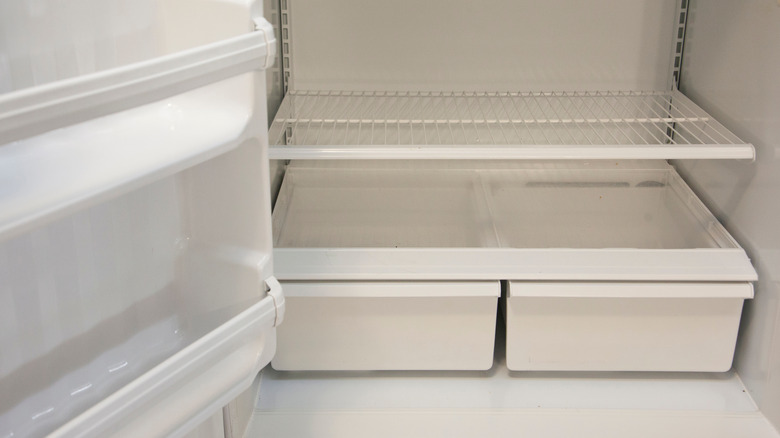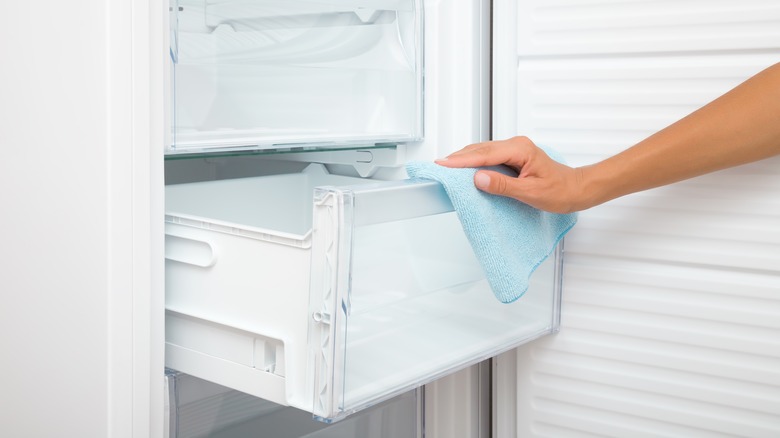How To Clean Mold From Your Fridge Crisper Drawers & Prevent It From Coming Back
As unwelcome as it is, refrigerator mold is fairly common. You are most likely to encounter it in the crisper drawer where your fruits and vegetables are stored. If spoiled produce is kept long enough, and if the drawers are not cleaned regularly, sooner or later you will likely find mold in your fridge. Thankfully, you can eradicate your mold problem by treating your fridge and drawers with undiluted vinegar and scouring with a wet rag.
One of the most common mistakes you're likely making when cleaning your fridge is using harsh chemicals, which is actually discouraged when it comes to treating mold. Bleach, for example, is often touted for its ability to kill mold, but it does not keep it from regrowing. Vinegar, on the other hand, is a non-toxic substance that kills mold and can be effective at preventing it in the future. There are also plenty of measures you can take to stop refrigerator mold for good, such as cleaning your refrigerator regularly, making use of baking soda, sealing food more effectively, and adjusting the temperature and humidity settings for safer storage.
Clean and prevent mold in your crisper drawer
If you've identified mold spores in your crisper drawer, don't panic. There are immediate steps you can take to eradicate the problem and prevent it from returning. The first step is to remove all of the food in your crisper drawer, especially the spoiled stuff, as rotting fruits and vegetables are a common source of refrigerator mold.
Next, remove the crisper drawers for more precise cleaning and coat all the surfaces, including the drawers and the inside of the fridge, with a spray bottle filled with undiluted distilled white vinegar. Give the vinegar time to set, which could be anywhere from a few minutes to an hour depending on the severity of the mold. Use a damp rag to scour the surfaces, wearing protective gloves and a mask while you work. This step will get rid of all the leftover traces of mold. Thoroughly dry every surface before putting the drawers and food back into the fridge. It is essential to prevent moisture from lingering as this could cause the mold to regrow.
In the future, you can keep refrigerator mold at bay by cleaning your crisper drawers once monthly and doing a deep clean from time to time with baking soda and water. Baking soda is a powerful kitchen staple that can keep mold out of your fridge. Placing an open box or a small jar of it inside your fridge is an effective way to prevent bacteria. Also, make use of the humidity settings to reduce excess moisture and food spoilage. Even if your fridge does not have a humidity setting, you can still adjust the temperature and store certain foods more carefully so that mold doesn't stand a chance.

